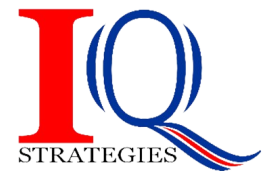
Introduction:
The realm of financial reporting has undergone a profound transformation in recent years, driven by shifts in organizational value and investor expectations. Historically, financial reporting predominantly relied on tangible assets, such as buildings and machinery, to assess an organisation’s worth. This approach facilitated a direct correlation between total assets disclosed in financial statements and market capitalization. However, the landscape has evolved, with intangible assets now playing a pivotal role in shaping organisational value.
The Transition to Intangible Assets:
Intangible assets, such as intellectual property, brand reputation, and human capital, have become increasingly significant contributors to an organisation’s overall value. Unlike tangible assets, intangibles are not physical in nature, making them challenging to quantify and evaluate. As a result, traditional valuation methods based solely on financial statements may no longer accurately reflect an organisation’s true worth. This shift has led to a disconnect between reported financial metrics and market capitalization, prompting investors to seek alternative sources of non-financial information to assess an organisation’s value accurately.
Navigating Market Valuation:
The growing reliance on intangible assets poses challenges for investors and capital markets in accurately valuing organisations. Relying solely on financial statements may lead to either over or undervaluation, potentially misguiding investment decisions. Recognizing this discrepancy, investors are increasingly turning to non-financial sources, such as sustainability reports, to gain insights into an organisation’s intangible assets and overall sustainability performance. Transparent disclosure of intangible information has become imperative for organisations seeking to enhance investor confidence and mitigate valuation risks.
The Emergence of Sustainability Reporting:
In response to the limitations of traditional financial reporting, organizations began to expand their disclosure beyond financial metrics to include environmental, social, and governance (ESG) factors. This evolution gave rise to corporate social responsibility (CSR) reports, which initially focused on philanthropic activities and ethical business practices. Over time, CSR reporting evolved into sustainability reporting, encompassing a broader range of non-financial factors that impact organizational value and long-term sustainability.
Addressing the Need for Standardization:
While sustainability reporting has gained traction, concerns have emerged regarding inconsistency, greenwashing, and the lack of materiality in reported information. To address these challenges, the International Sustainability Standards Board (ISSB) issued its inaugural standards, IFRS S1 and IFRS S2. These standards provide a standardised framework for disclosing sustainability information that is material to an organisation’s financial performance and stakeholder interests. By establishing globally recognized sustainability standards, the ISSB aims to enhance transparency, comparability, and decision-making for investors, regulators, and other stakeholders.
Conclusion
The evolution of financial reporting from tangible assets to sustainability standards reflects the dynamic nature of corporate disclosure in response to changing market demands and stakeholder expectations. As intangible assets continue to shape organisational value, transparent disclosure of sustainability information becomes increasingly vital for investors and stakeholders alike. By embracing standardised sustainability reporting frameworks, organisations can effectively communicate their value proposition, enhance investor confidence, and drive sustainable long-term growth.



